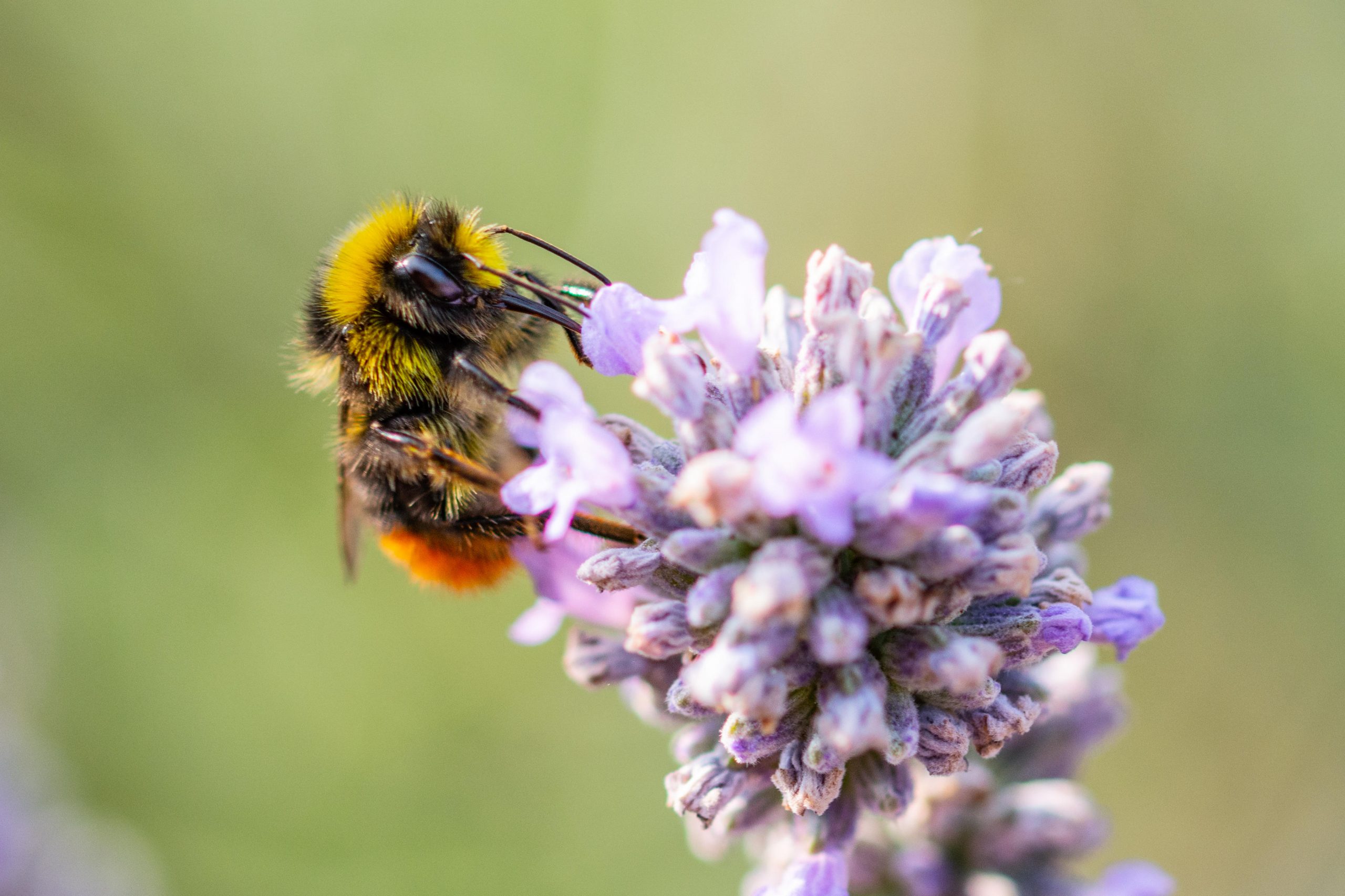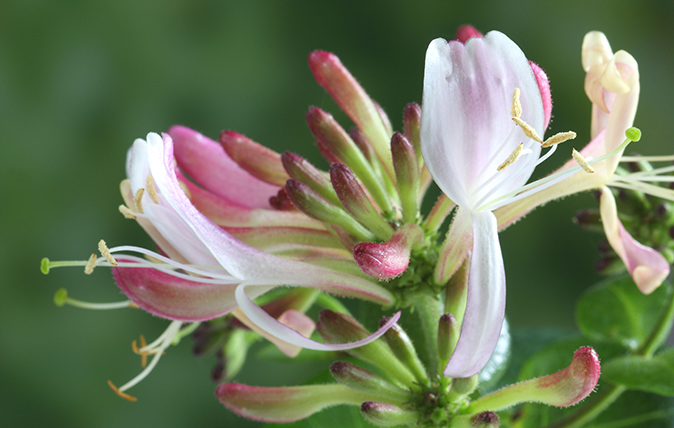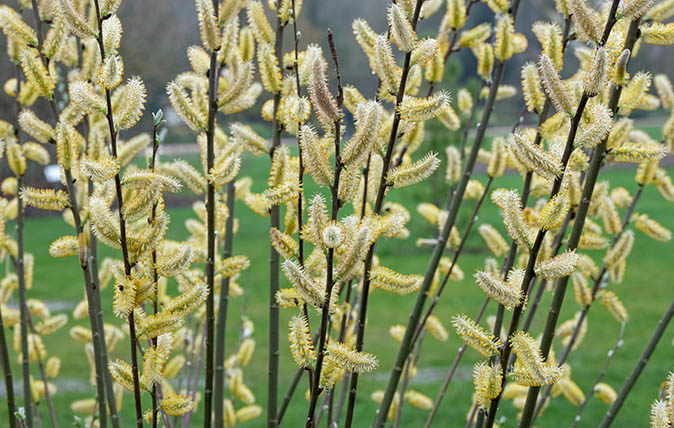The truth about bees: 'I'm a hopeless fan... but plants are cleverer than insects. They have to be.'
Charles Quest-Ritson looks at the fascinating interplay of plants and their pollinators, explaining how what really goes on in your garden is far more fascinating than the stories you might have been led to believe.


There has been a lot of whingeing talk that leafblowers are wicked because they kill innocent insects. Heaven knows what people would say if they knew the destruction meted out when we take our first cut of hay. Did you know that there are more insects in an acre of meadow than there are humans in the whole world? At least, that’s what I was taught as a teenager, but it may no longer be true now that humankind is pushing eight billion.
There must also be billions of insects, in my garden, although I only ever notice the ones I try to kill, such as hornets, wasps and greenfly. The hornets and wasps are actually supposed to clobber the greenfly, but they never seem to do it fast enough.
Of course, I also notice the ones that everyone loves — butterflies, damselflies and bees. I am a hopeless fan of bumblebees — I love their busy droning, their industriousness (they are out and about even in January if the weather is warm enough) and their comic clumsiness as they stagger from flower to flower. There are some 20 species in England, but I don’t know any of their names because they all look more or less the same. One can usually find several species buzzing harmoniously together when there’s food to be found on a good plant, such as a cotoneaster in flower.
"Bees are foodies, and have their likes and dislikes."
Some people also mourn the loss of honeybees to varroa — well, we all do, but in my case I mourn the consequent loss of honey to eat, whereas the know-alls assure each other that bees are such important pollinators of our fruit trees. They are, indeed, but I’ve grown apple trees for many years and I notice that they are also pollinated by queen wasps, house flies and, above all, by bumblebees. In my orchard, there must be 10 bumblebees buzzing noisily around the apple blossom for every honeybee. It’s not that we lack for hives in our village — it’s simply that the bumblebees are so energetic and tireless.
More significant than pollination, but a direct result of it, is the importance of bees in the evolution of plants. New plant species are arising all the time, largely through hybridisation between existing plants. Take daffodils, for example. The genus Narcissus is in a rapid state of evolution and Spain is where it is all happening. Human activity in the Iberian peninsula has created different microhabitats where species that were once distinctly different are now hybridising and developing new species, stable and self-perpetuating. It is bees, of course, that carry the pollen from flower to flower.

Yet they don’t always do so. Bees are foodies, and have their likes and dislikes. There’s a valley in the Pyrenees with two species of snapdragon — purple Antirrhinum pseudomajus and yellow A. striatum. Both are popular with bumblebees, who hop promiscuously from one to the other. The inevitable result is a mass of hybrids, often of considerable beauty, in a range of striking colour combinations, but there is no evidence of the usual back crossing between the hybrids and their parents. This is because the bees ignore the hybrids, so they remain unpollinated. Why?
On this occasion, the snapdragons have got the better of them. The bees rely on the flowers to guide them to the right entry spot. There’s a mark on the lower lip of the snapdragon that acts as their landing pad.
Exquisite houses, the beauty of Nature, and how to get the most from your life, straight to your inbox.
Yellow Antirrhinum striatum, however, is not so keen on losing its identity and has evolved a protective gene to keep itself pure. That gene ensures that any seedlings that are actually the result of hybridisation do not have a landing spot for the bumblebees. It’s a remarkable example of a plant evolving not to attract pollinators, but to repel them.
Plants are cleverer than insects. They have to be. But sometimes the reason for a mutation is not at all clear. Cambridge scientists were puzzled some years ago when they noticed that tomatoes infected with cucumber-mosaic virus, which normally weakens them, set more fruit than clean plants. Bumblebees preferred them, because the plant’s reaction to infection is to produce a volatile compound that the bees find especially attractive. Everyone wins: the bumblebees have a rewarding experience, the virus does not kill its host and the tomato plant carries lots of fruit.

The latest development is to spray clean plants with a very mild strain of the virus, which barely affects the vigour of the plant, but guarantees the amorous attentions of bumblebees. Yields are better than ever.
It’s all about co-evolution between the three players — plant, insect and virus. Perhaps someone should start working on the co-evolution of bumblebees, leaf-blowers and whingers.

The best honeysuckle to grow in your garden – especially if they’re gifts from now-departed friends
Charles Quest-Ritson extols the virtues of delightful honeysuckle.

What to plant if you're thinking of putting a willow in your garden
Charles Quest-Ritson offers advice on this incredibly vibrant plant.

Credit: Alamy
A moorland splashed with heather makes our hearts leap — so why don't we grow it any more?
Charles Quest-Ritson looks at how heather has gone out of fashion — and wonders what we can do about it.

Credit: Alamy
The daftest plant name in English, and how it belongs to a wonderful flower just starting to show its potential
There are a lot of silly names for flowers our there – and Charles Quest-Ritson has a chilling warning for those

Rage against the buttercups: How to wage war on the weeds in your garden
Charles Quest-Ritson loves plants — but in his garden, he only wants the ones he chooses.

Credit: Alamy
Rhododendrons: A beautiful excuse to lose the battle against invading flowers
Charles Quest-Ritson explains why these gorgeous purple flowers are not such a bad thing, really.
Charles Quest-Ritson is a historian and writer about plants and gardens. His books include The English Garden: A Social History; Gardens of Europe; and Ninfa: The Most Romantic Garden in the World. He is a great enthusiast for roses — he wrote the RHS Encyclopedia of Roses jointly with his wife Brigid and spent five years writing his definitive Climbing Roses of the World (descriptions of 1,6oo varieties!). Food is another passion: he was the first Englishman to qualify as an olive oil taster in accordance with EU norms. He has lectured in five languages and in all six continents except Antarctica, where he missed his chance when his son-in-law was Governor of the Falkland Islands.
